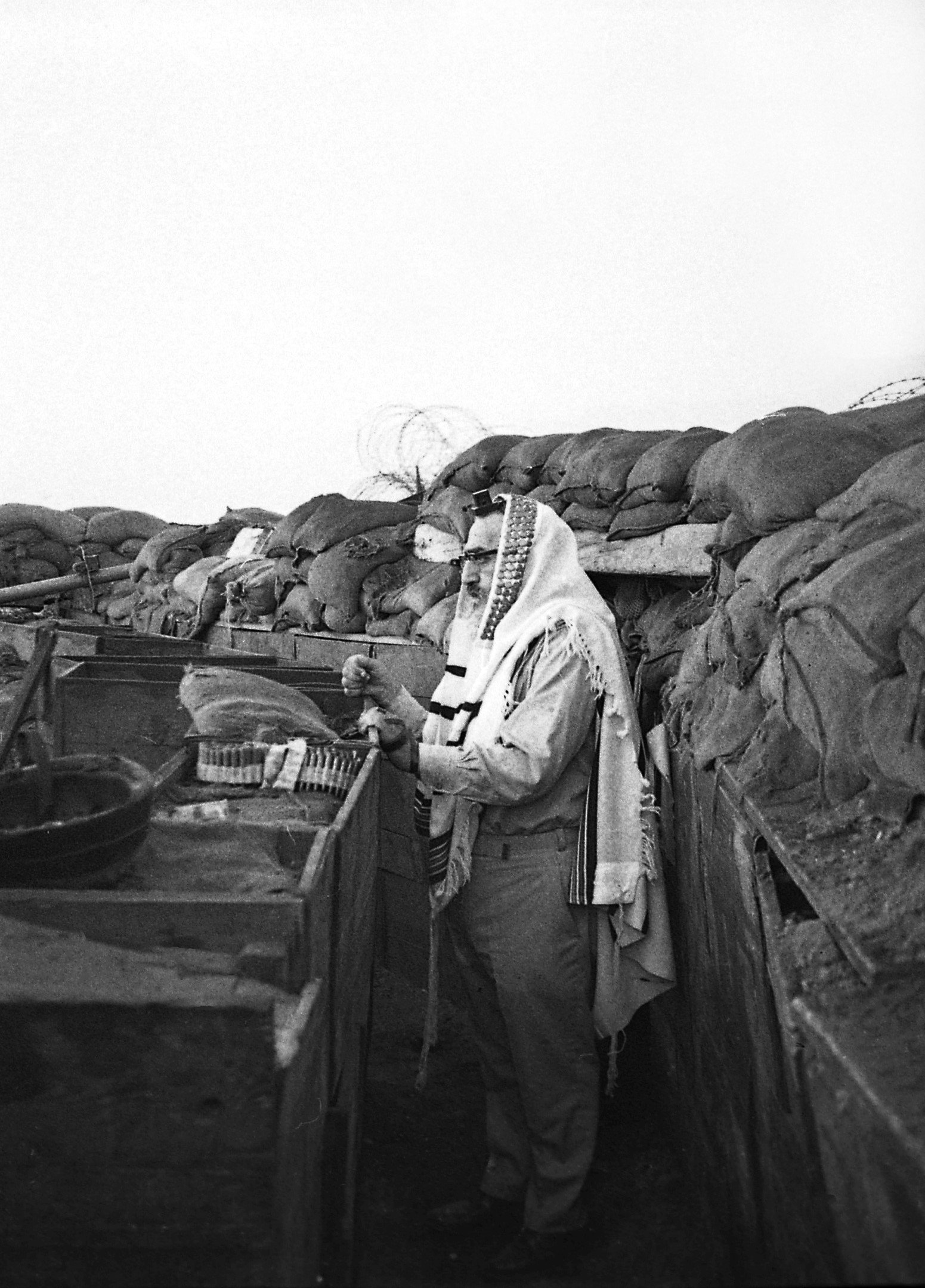Swapping Identities: The Temple Mount Is a Hoax
Part 1: The Hoax
.
.
Annexing Jerusalem
THEY CALLED it the Green Line due to the color of ink used to draw boundary markers on the map, thereby dividing the land between Israel and its neighbors while the armistice talks were going down. On June 7, 1967, Israeli forces advanced beyond the 1949 Armistice Agreement border, taking both Jerusalem and the City of David. Shlomo Goren, chief Rabbi of the Israeli Defense Forces, advanced upon the Western Wall, and eventually the Temple Mount, leading his soldiers in exuberant religious exaltations. Within days, some 200,000 Jews flocked to the Western Wall in what was described as the first mass Jewish pilgrimage to the Mount since the destruction of the Temple in 70 AD.
The question you will be asking yourself before this is over is why Goren chose the Temple Mount rather than Mount Zion, by which Zionism gathers its name. At the risk of ruining the ending, I’ll give you the answer. Because the Temple Mount is a Roman fort and not the location of Solomon’s Temple. You see, even Zionism is a slave of Rome. Also, even at the foot of the mountain, Ba’al received his worshiped.
Oh, and another thing. All we are ever given is the illusion of choice. Rome is playing both sides. Follow along. The Wikipedia claims of Goren’s victory procession: “Islamic authorities did not disturb Goren when he went to pray on the Mount until, on the Ninth Day of Av, he brought 50 followers and introduced both a shofar, and a portable ark to pray, an innovation which alarmed the Waqf authorities and led to a deterioration of relations between the Muslim authorities and the Israeli government.”
Rather than claiming the Temple Mount as their own, once and for all, the then Prime Minister of Israel, Levi Eshkel, simply gave control of the Temple Mount over to the Jerusalem Islamic Waqf rather than the military. And that is because Zionism will only succeed in a world without shalom.
The Austrian Connection
WE WERE in Austria, just south of Munich. It was Sabbath. I had only recently fallen into a Venice canal and was still recovering from that emotional boo-boo, but that’s an entirely different incident. We were reading our Torah portions as a family and listening to commentary, with a spectacular view of the Alps to engage us, and it suddenly occurred to me that the commentator did not believe the first and second temples of Solomon or Herod had ever sat upon the Temple Mount. This intrigued me. Namely, because I have been to Jerusalem on multiple occasions and the Wailing Wall never sat right with my ruach. Therefore, I have never once journeyed upon the Mount. I can tell you now, it had something to do with Yahusha’s words and believing that every stone of the temple in Jerusalem was literally thrown down. But we’re also dealing with days past, when cognitive dissonance got the better of me. Nowadays, I hone into the soft whispers of the soul like a screaming tornado siren.
The commentator said something about Fort Antonia, which I’d undoubtedly heard about before but never in this context. Also, the City of David, the threshing floor, Zion, the first book of Maccabees, and some guy named Bob Cornuke. Those were my only clues to start with. As a writer, I rarely go anywhere without my leather notebook, even if it’s from the bed to the toilet or the fridge. So, I scribbled down whatever information he offered and then kept my pen suspended directly above the page, hoping something else might come along. My wife sat by my side, listening intently to everything that was being suggested while simultaneously—and rather energetically—falling into vociferous agreement, as if he were speaking to us in the same room rather than our computer screen.
“Uh-huh! That’s right! Fake! It’s totally fake! Yup! Mm-hmm! Absolutely! It’s an imposter! Uh, so true!”
I consider my wife a research partner, which is wonderful, except for moments like these, when she turned with an extra helping of spousal disgust, particularly due to the fact that I was scribbling notes down, and said: “What, you didn’t know that already?”
Bob Cornuke sounded like the sort of informant I should be listening to. I was able to track down a video interview with Chuck Missler, but I really despise researching weighty matters through video, and what I did watch helped little. Not much else of his was coming up online. I needed words. Cornuke had written a book some years back, probably about the time of his Missler interview. It’s called Temple. But we were living in the European Union and Temple was not available for sale in any of her countries. That was a huge red flag. I knew I was onto something. It also meant I’d be inquiring for further information on my own. Thus, I began my investigation.
And this is what I found.
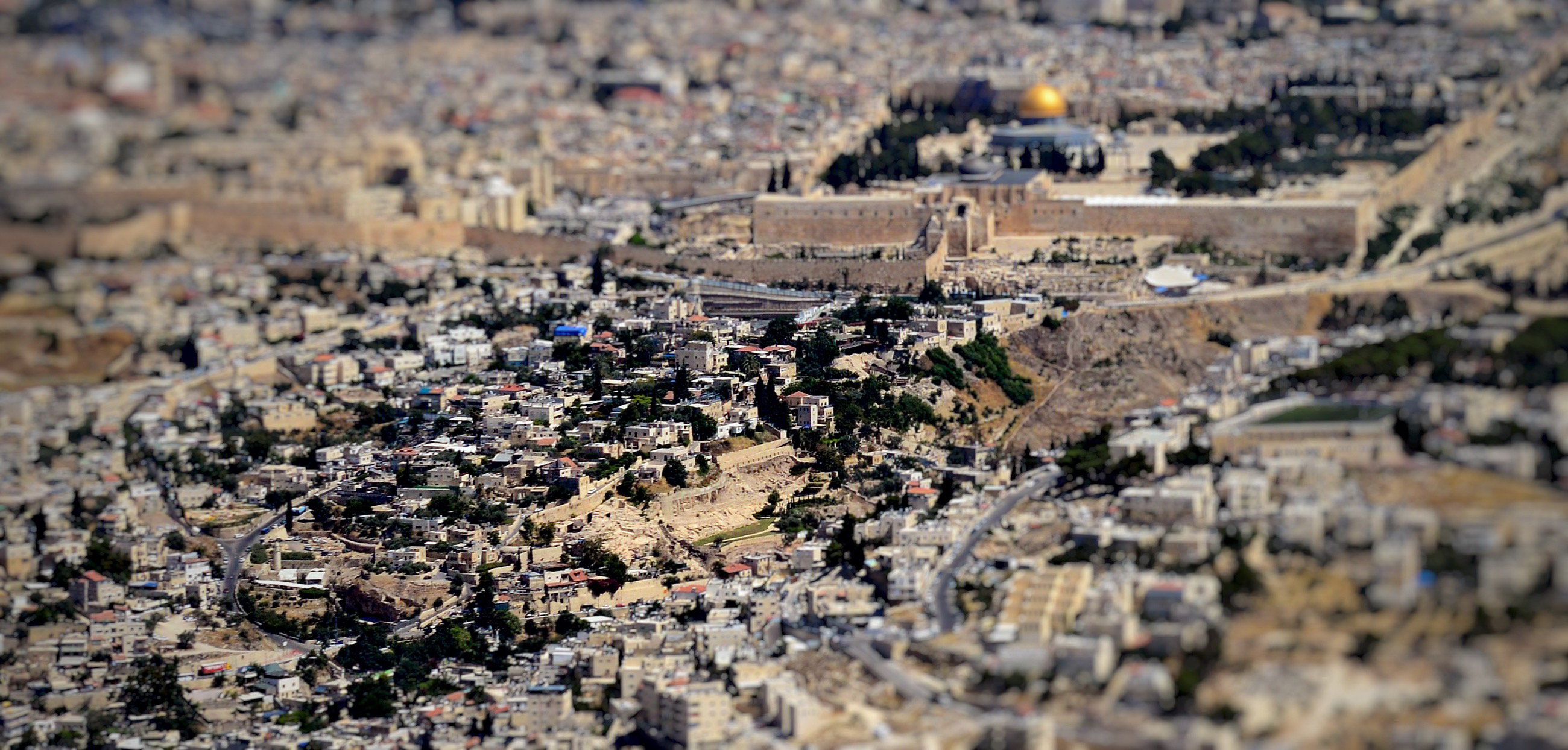
LOOKING TO ZION
MY FIRST destination was—as you can probably imagine—the most obvious source of information. Hebrew Scripture. I had always assumed Scripture pinpointed the temple’s exact location, and that the Temple Mount was the obvious x-marks the spot. I was wrong. Obviously, the tabernacle had once resided in Shiloh (Joshua 18:1). I knew that much. What I wanted to understand was where precisely Solomon had erected the temple. A threshing floor was scribbled down in my notebook. Seemed as good a place as any to start. A quick search brought up the following:
Now Solomon began to build the house of Yahuah at Jerusalem on Mount Moriah, where Yahuah had appeared to his father David, at the place that David had prepared on the threshing floor of Ornan the Jebusite.
2 Chronicles 3:1
Mount Moriah. Jerusalem. Lots of history there. Got it. Abraham almost sacrificed his son Isaac upon Mount Moriah. Later on, through the centuries, some guy named Ornan the Jebusite groomed a threshing floor there. In turn, Solomon built Yahuah’s house upon it. 2 Chronicles says a lot and seemingly very little. All I could visualize here was the Temple Mount. But I made a mental note of Jebusite. That may be important. The City of David was also scribbled down in my notebook, and since David had prepared the plot, that seemed like the next natural place to turn. Another thorough combing of Scripture reaped the following reward.
Nevertheless, David took the stronghold of Zion (that is, the City of David).
2 Samuel 5:7
Zion and the City of David. That’s two birds with one stone. This is of critical importance, as Scripture tells me they are both the same. Another reference could be found in 1 Chronicles. It reads:
And David and all Israel went to Jerusalem, which is Jebus, where the Jebusites were, the inhabitants of the land. But the inhabitants of Jebus said to David, “You shall not come in here!” Nevertheless, David took the stronghold of Zion (that is, the City of David).
1 Chronicles 11:4-5
And there it is. Jebusites. The stronghold of Zion was taken from Jebusites. Mount Zion was the name given to the Jebusite fortified city on the lower part of ancient Jerusalem’s south-eastern hill. Here’s one more verse I found which speaks to the strength of the argument.
In Salem also is his tabernacle, and his dwelling place in Zion
Psalm 76:2
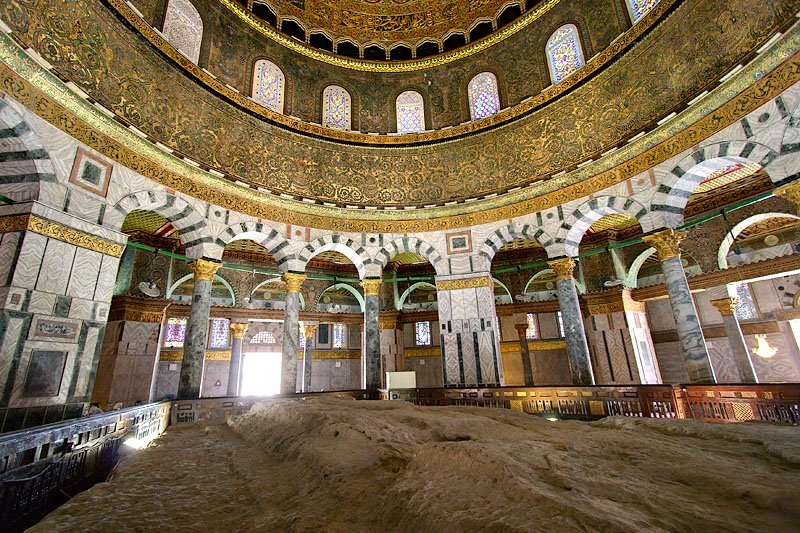
The Akra, Millo, and Ophel
FINALLY FEELING well versed on the topic, I thought it might be a good idea to grow better accustomed with the terrain. Though I have been to Jerusalem twice, as of this writing, I did not think it was a good idea to ask my wife if I could purchase another plane ticket and a week’s accommodation, just to pen this article. I needed to comb the valleys and hills, but the picturesque internet—guided by my memory and intuition—would have to do.
The City of David was roughly 12-acres in size. I checked. This small swath of land did not include the 36-acre Temple Mount. Some will argue that the Temple Mount was the threshing floor mentioned in 2 Chronicles 3:1, and therefore resided beyond the city limits. But the Temple Mount is located a third of a mile to the north. Far more importantly, the slab of rock under the Dome doesn’t even look like a threshing floor. I scoured The Matrix for pictures of actual threshing floors, and none of them even remotely compare. The Dome of the Rock was planted on top of a rock. Notice how they didn’t call it Dome of the Threshing Floor. But at this point in my investigation, I wasn’t ready to focus upon the Dome quite yet. Plant a red flag there and we shall return to it a little later on.
The Kidron Valley cuts a path to the east of both Jerusalem and the City of David, separating them from the Mount of Olives. But the Gihon Spring resides below the City of David and not the Temple Mount. Take a mental note of that. Something else that immediately grabbed my interest—in direct relation to the location of the Temple—was the Hinnom Valley, which runs directly behind, or rather to the south of the City of David. This is Gehenna. Yahusha had much to say on the location. I have just placed the Gehenna judgement within sight and smelling distance of the Temple. Gehenna is a topic which I have long been passionate about, because Hebrew Scripture describes two things. First, a literal Gehenna judgement. And two, a mortal soul, easily destroyed as a thistle in the flames. That is quite opposite, mind you, from an indestructible immortal soul awaiting eternal torment, as advocated by Plato and Hellenized Christians.
There’s also this little nugget I found in the Targum. And that is to say, the correlation between the Tabernacle in the wilderness and Gehenna were there from the beginning.
And thou shalt set the hanging of the gate o the court on account of the merit of the mothers of the world, which spreadeth at the gate of Gehennam, that none may enter there of the souls of the children of the people of Israel.
Exodus 40:8 [Targum]
Here’s something else I learned while mentally scouting out the terrain. There are three important names which we need to learn and memorize, and they are: Akra, Millo, and Ophel. The Akra was another name for the City of David. The Millo was the space between the City of David and Jerusalem. Ophel relates to a fortified hill, and likely pinpoints where the Temple was.
Then David dwelt in the stronghold, and called it the City of David. And David built all around from the Millo and inward.
2 Samuel 5:9
Nobody really knows what the Millo is. The Wikipedia claims it was a Jebusite land bridge which connected the City of David to modern Jerusalem, but some translations of Scripture have identified it as a landfill. If I had to choose one or the other, a sloping landfill seems far likelier. Aside from the obvious fact that The Wikipedia is spook literature, I’ll say why in a second. And besides, archeologists can’t even tell the difference between the Temple’s foundation and a Roman fort. Actually, scratch that. Archeologists do know the difference, and they’re lying to you about it. The Zionists are lying to you about it too. Everyone is. But that’s the entire point, isn’t it? The Temple Mount hoax brilliantly lays out the nature of deception. Meanwhile, we can clearly see that David did not build into or beyond the Millo. It was Solomon who built the Milo.
And this is what caused him to rebel against the king: Solomon had built the Millo and repaired the damages to the City of David his father.
1 Kings 11:27
Nothing about a proposed land-bridge screams out at me here. What Solomon essentially did, through forced labor, was to design the Millo between the City of David and modern Jerusalem so as to be easily traveled, as well as inhabitable. A picture of their union is formed in Psalm 122.
Jerusalem is built as a city that is compact together.
Psalm 122:3
Today, what remains of the Millo, or rather Solomon’s sloping ridge, is clearly visible.
Two cities became one.
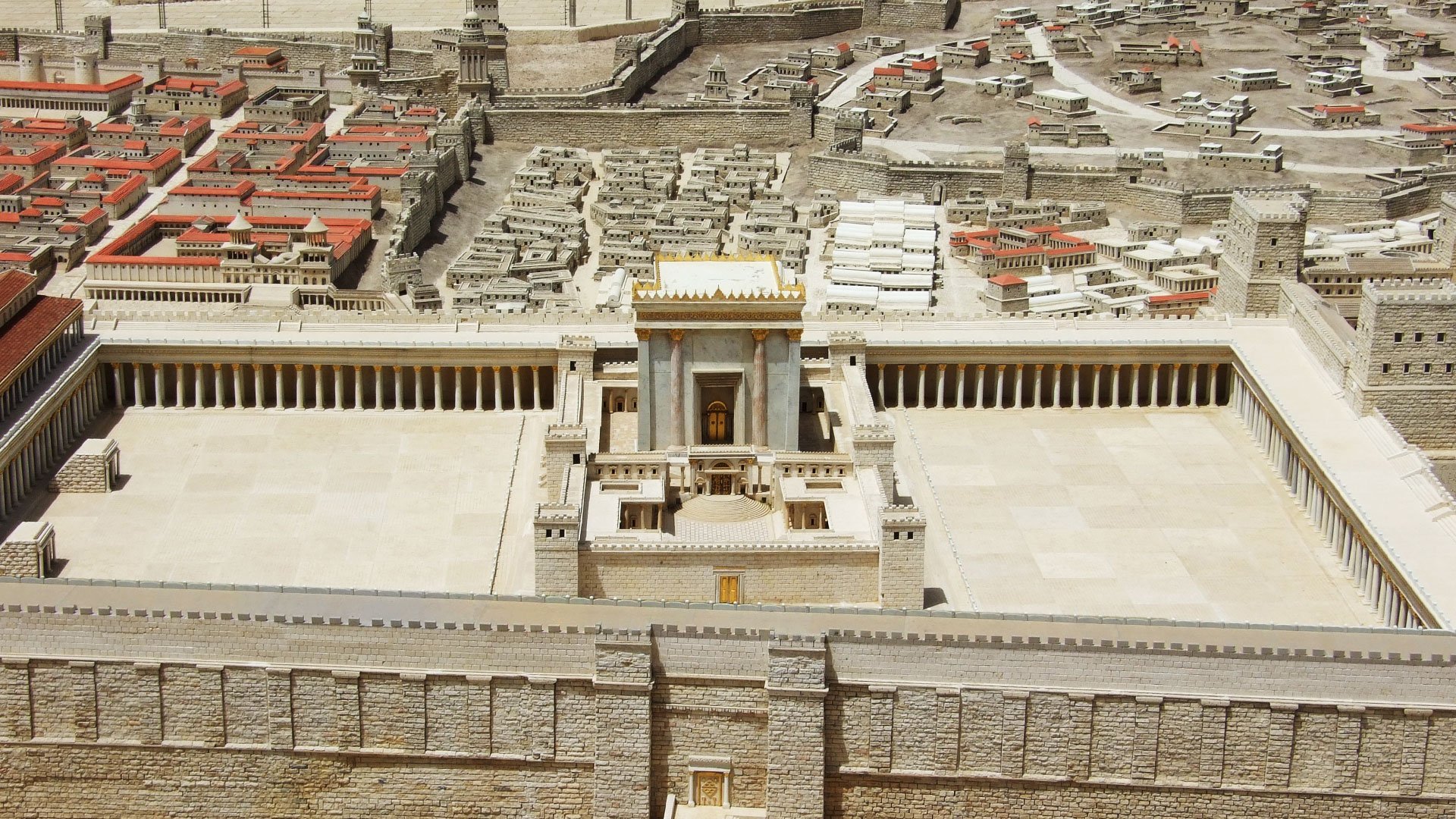
FORT ANTONIA
MY NOTEBOOK reminded me that I needed to look into First Maccabees. Now seemed as good a time as any. Researching Maccabees sent me down all sorts of rabbit trails, but for the purposes of this paper, I needed to know when that big slab over Jerusalem first appeared, if neither David nor Solomon had groomed the rock below the Dome. Maccabees didn’t disappoint. The often-ignored book circled me right back towards the construction of the Temple Mount. No, we’re not talking about the threshing floor in Zion anymore. We’re talking about the Big Guy. The Temple Mount. In its very first chapter, Maccabees let me know that foreign powers built strong towers in order to Hellenize the Hebrews. This didn’t go well. Particularly the ham sandwiches. Something called the Maccabean Revolt followed.
And they built the city of David with a great and strong wall, and with strong towers, and made it a fortress [acra] for them: And they placed there a sinful nation, wicked men, and they fortified themselves therein: and they stored up armor, and victuals, and gathered together the spoils of Jerusalem; And laid them up there: and they became a great snare. And this was a place to lie in wait against the sanctuary, and an evil devil in Israel.
1 Maccabees 1:35-38
I put special emphasis on fortress. This is because acra (its translated Greek counterpart), derives from the acropolis and signifies a lofty fortified place overlooking a town. We are witnessing the beginnings of the Temple Mount. Within another dozen chapters, Maccabees let me know that the temple sat on a hill very near to the tower.
He ordained also that that day should be kept every year with gladness. Moreover, the hill of the temple that was by the tower he made stronger than it was, and there he dwelt himself with his company.
1 Maccabees 13:52
Some will say this is because the temple was already on the Temple Mount and not the nearby City of David, and if so, then this conversation is going nowhere. I knew I probably needed to cash in my one phone call. You know, speak to someone with expert advice. Oh yeah, I forgot to mention, I’d scribbled Josephus into my notebook as well, right next to Bob Cornuke. Had I actually managed to acquire his book, Cornuke probably delivered in leaps and bounds, and would have spared me the agonizing research which made this paper possible.
Perhaps the Roman propagandist had something to say on the matter, I told myself. No surprise, Josephus has much to say. After concluding that Josephus got it right while everyone else today has it wrong, you will likely protest: “But why would they lie?” For the same reason why seminary students lie to us about the Law of Yahuah being done away with. Or how creationists will callously lie to you about the Copernican Revolution in order to force-feed Plato’s globe earth into the Hebrew narrative. Why, you ask? Exoteric explanations have an esoteric purpose. For example, Christians who claim the Law has been done away with have just made Yahuah the evil Demiurge and are cleverly adapting the Gnostic doctrine. I’m getting sidetracked. Back to Josephus.
“Now on the north side [of the temple] was built a citadel, whose walls were square, and strong, and of extraordinary firmness. This citadel was built by the Kings of the Anemone race, who were also High Priests, before Herod; and they called it the tower…But for the tower itself, when Herod the King of the Jews had fortified it more firmly than before, in order to secure and guard the temple, he gratified Antonius; who was his friend, and the Roman ruler; and then gave it the name of the tower of Antonia”
Antiquities of the Jews, Book XV, chapter XI
So far, I have only read a snippet of Josephus, and this is what I learned. The citadel was to the north of the temple. Its walls were square, strong, and extraordinarily firm.
Strengthening its fortifications was a project of Herod. The Edomite king, who sucked up to Marc Antony and Cleopatra and then, when their suicide hoax didn’t work out so well for him, kissed each of Octavian’s cheeks in repentance, then named the citadel after his friend. Marc Antony again. If there was any doubt still left in my mind, Josephus gives the location of the temple away beyond any reasonable doubt in War of the Jews. We read:
“Now as to the tower of Antonia, it was situated at the corner of two cloisters of the court of the Temple; of that on the west, and that on the north. It was erected upon a rock of fifty cubits in height, and was on a great precipice. It was the work of King Herod, wherein he demonstrated his natural magnanimity. In the first place, the rock itself was covered over with smooth pieces of stone, from its foundation, both for ornament, and that any one who would either try to get up or to go down it might not be able to hold his feet upon it. Next to this, and before you come to the edifice of the tower itself, there was a wall three cubits high; but within that wall all the space of the tower of Antonia itself was built upon, to the height of forty cubits. The inward parts had the largeness and form of a palace it being parted into all kinds of rooms and other conveniences, such as courts, and places for bathing, and broad spaces for camps; insomuch that, by having all conveniences that cities wanted, it might seem to be composed of several cities.
By its magnificence it seemed a palace. And as the entire structure resembled that of a tower, it contained also four other distinct towers at its four corners; whereof the others were but fifty cubits high; whereas that which lay upon the southeast corner was seventy cubits high, that from thence the whole Temple might be viewed, but on the corner where it joined to the two cloisters of the Temple, it had passages down to them both, through which the guard (for there always lay in this tower a Roman legion) went several ways among the cloisters, with their arms, on the Jewish festivals, in order to watch the people, that they might not there attempt to make any innovations; for the Temple was a fortress that guarded the city, as was the tower of Antonia a guard to the Temple, and in that tower were the guards of those three. There was also a peculiar fortress belonging to the upper city, which was Herod’s palace, but for the hill Bezetha, it was divided from the tower Antonia, as we have already told you, and as that hill on which the tower of Antonia stood was the highest of these three, so did it adjoin to the new city, and was the only place that hindered the sight of the Temple on the north.”
War of the Jews, Book V, chapter VIII
Again, Josephus provides the identity of the Temple Mount without any reasonable doubt. It is Fort Antonia. Here is what I learned.
Antonia was a project of Herod. He built the Roman fort upon a rock 50 cubits in height, situated upon a great precipice. Just by reading this, it appears to be the highest mound, thereby casting its shadow upon every other mound in Jerusalem—including the Temple.
Think of it like this. The Temple was a fortress which guarded the city, whereas Antonia was a fortress which guarded the temple. Antonia was a city unto itself. It had inner-courts, places for bathing, and broad spaces for camps. Antonia furthermore had four distinct towers at each of its four corners. Josephus says they were 50 cubits high, with the exception of the southeast tower, which was 70 cubits high. I looked up those measurements, and we’re dealing with 75 foot-high and 105-foot-high towers, respectively. From the southeastern tower, the Romans could watch the activity of every man, woman, and child in the Temple below.
The Temple and Antonia were connected by two covered bridges, not a slab or rock.
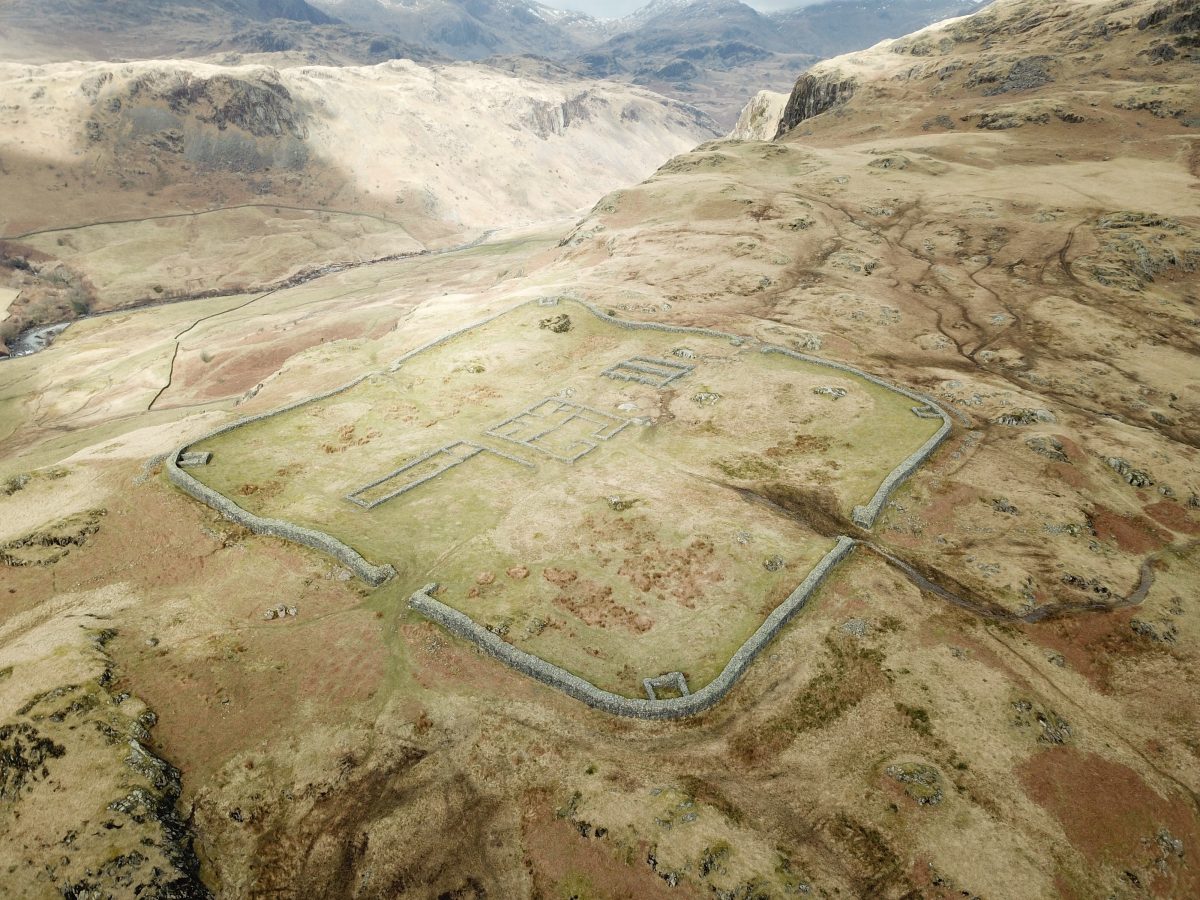
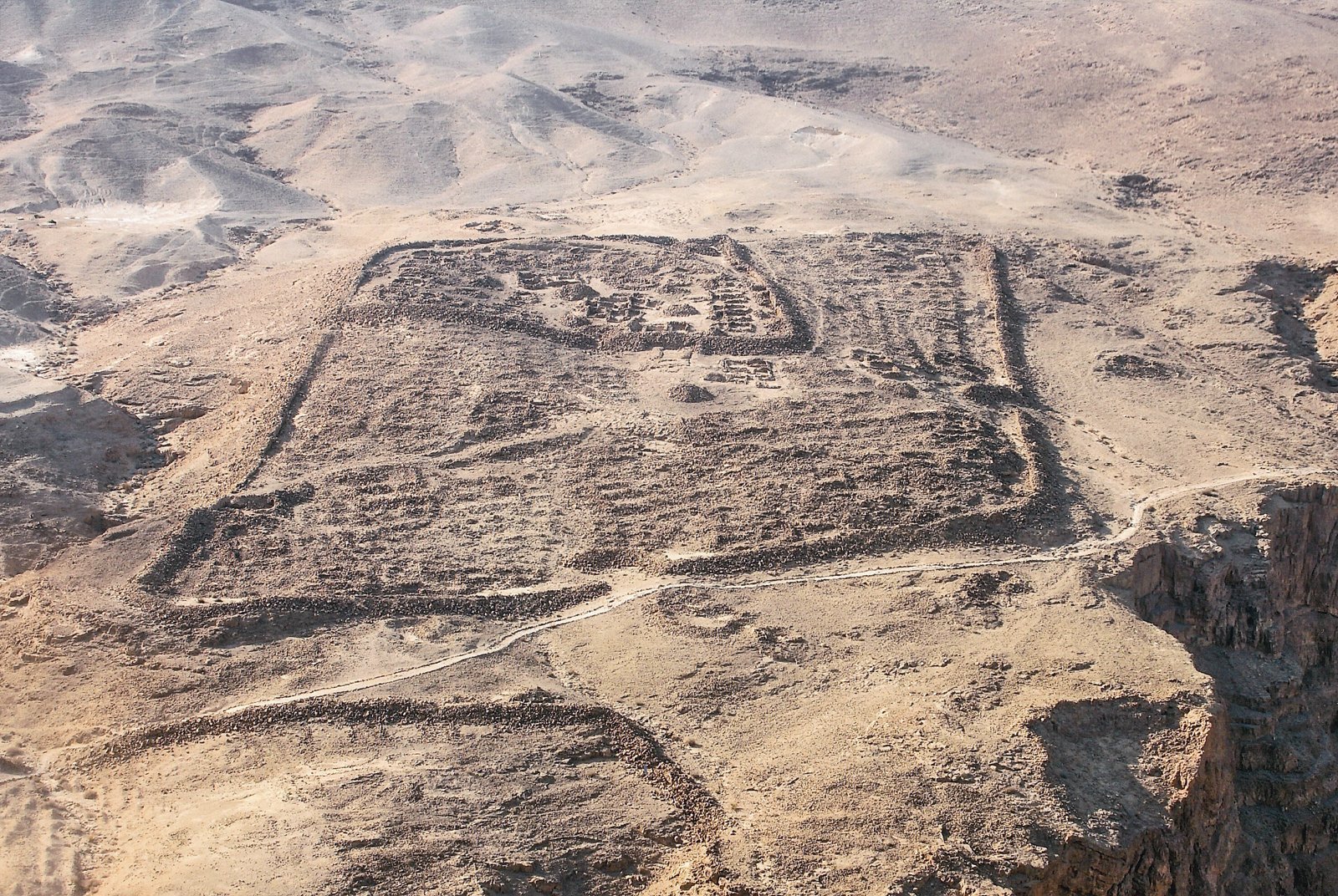
See, here’s the thing about the Temple Mount in Jerusalem which no mainstream historian or archeologist will dare let you know about. Fort Antonia looks like a Roman fort. It is also the size necessary and provides all of the same functions as a Roman fort. It is furthermore not coincidental. I snooped around online, and I came to the following conclusion. In terms of Roman forts, Antonia was cookie cutter. That is not to say that Herod did not decorate Antonia with his own flamboyant flourishes, but fortresses like Antonia dotted the Roman Empire, ruins of which can still be found in Spain, Britain, and Germany. The two above pictures are that of the Hardknott Roman Fort in England and the Roman fort in Masada. Neither received Herod’s funding, and both were hastily made. Masada particularly. The Roman fortress at Sergiopolis in Syria is still standing to this day. Similarities between the two are striking. Sergiopolis holds 40-acres to Antonia’s 36. Realize that a fort of this size could number as many as 6,000 Roman soldiers.They were a city.
Masada is only 100 kilometers by car from Jerusalem and is a dead giveaway. The gig is up.
The Temple Mount is Antonia.
Don’t believe me? Then believe Josephus. With one final glimpse upon Jerusalem, Josephus gives the Temple Mount its final death blow. Jerusalem, he insists, was raised beyond its very foundations. Every stone was thrown down. In the aftermath of war, absolutely nothing remained. None, except for one foundation. Just one.
“And where is now that great city, the metropolis of the Jewish nation, which was fortified by so many walls round about, which had so many fortresses and large towers to defend it, which could hardly contain the instruments prepared for the war, and which had so many ten thousands of men to fight for it? Where is this city that was believed to have God himself inhabiting therein? It is now demolished to the very foundations, and hath nothing left but that monument of it preserved, I mean the camp of those that hath destroyed it”
War of the Jews, Book VII, chapter VIII
“Why would they lie?” you insist.
Simple. The world is a stage. All of it. The Temple Mount is no exception to the rule. Today, it is Islams stage. It is Rome’s stage. And ironically, Zionism pulls its very name from its stage. Oh, they lie, alright. And it’s almost always for deeply embedded spiritual purposes. There’s a slight of hand to be discovered. But that’s the subject of my next paper.
Let’s dig a little deeper.
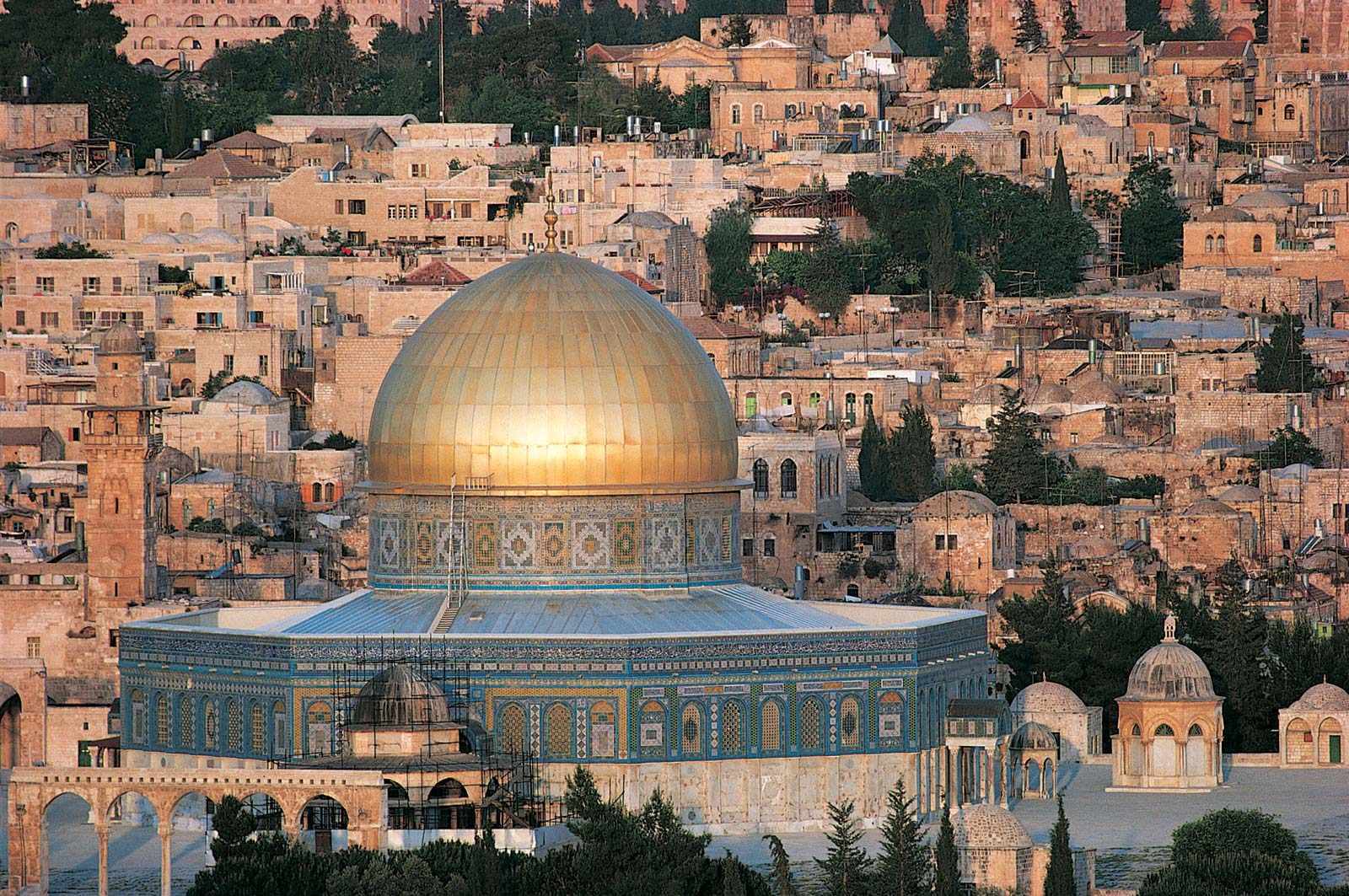
Part 2: The Swap
Swapping Identities
HOPEFULLY BY NOW we’ve all come to terms with the fact that Yahusha’s words came true. Every stone of the Temple in Jerusalem was literally thrown down. Nothing remains. Not even its foundation. There is no standing wall to bury our noses in and pray to. You know that large 36-acre plot of land everyone calls the Temple Mount? It goes by another name. Fort Antonia. It was developed much later than Solomon’s Temple, and Christened after Herod’s friend, Mark Antony. The Temple which stood upon Mount Zion—not the Temple Mount mind you—was completely destroyed in 70 AD. The Roman propagandist Josephus thoroughly detailed this historical fact. I assure you—the Romans did not completely destroy Fort Antonia. They would have good reason to leave it standing, don’t you think?
Those few people who have been honest enough with themselves to conclude the Temple Mount is not the historical location of Solomon’s temple rarely dig deeper into the greater implications at play. In fact, I have yet to see anyone go there. Perhaps it is because scholars know something about how the world really works, and who is running it, if you get my drift. Perhaps they have said enough without saying too much. Everybody needs a job, and nobody wants to murder their families and then commit suicide, if you once again get my drift. For the record, I have never been suicidal and I love my family.
The very next question I needed to confront, having concluded that the Temple Mount is in actuality a Roman fort, was when the switch happened in history. Though it is demonstrably possible to re-write history within one single generation, and indeed it has happened, those who witnessed the location of the Temple residing inside the ancient City of David for two-thirds of the first century would doubtfully be convinced of the Fort Antonia deception, even if Josephus had been a part in it. Regardless, the swap likely happened very early on in our history. I wanted to know who had a hand in it. Why and when.
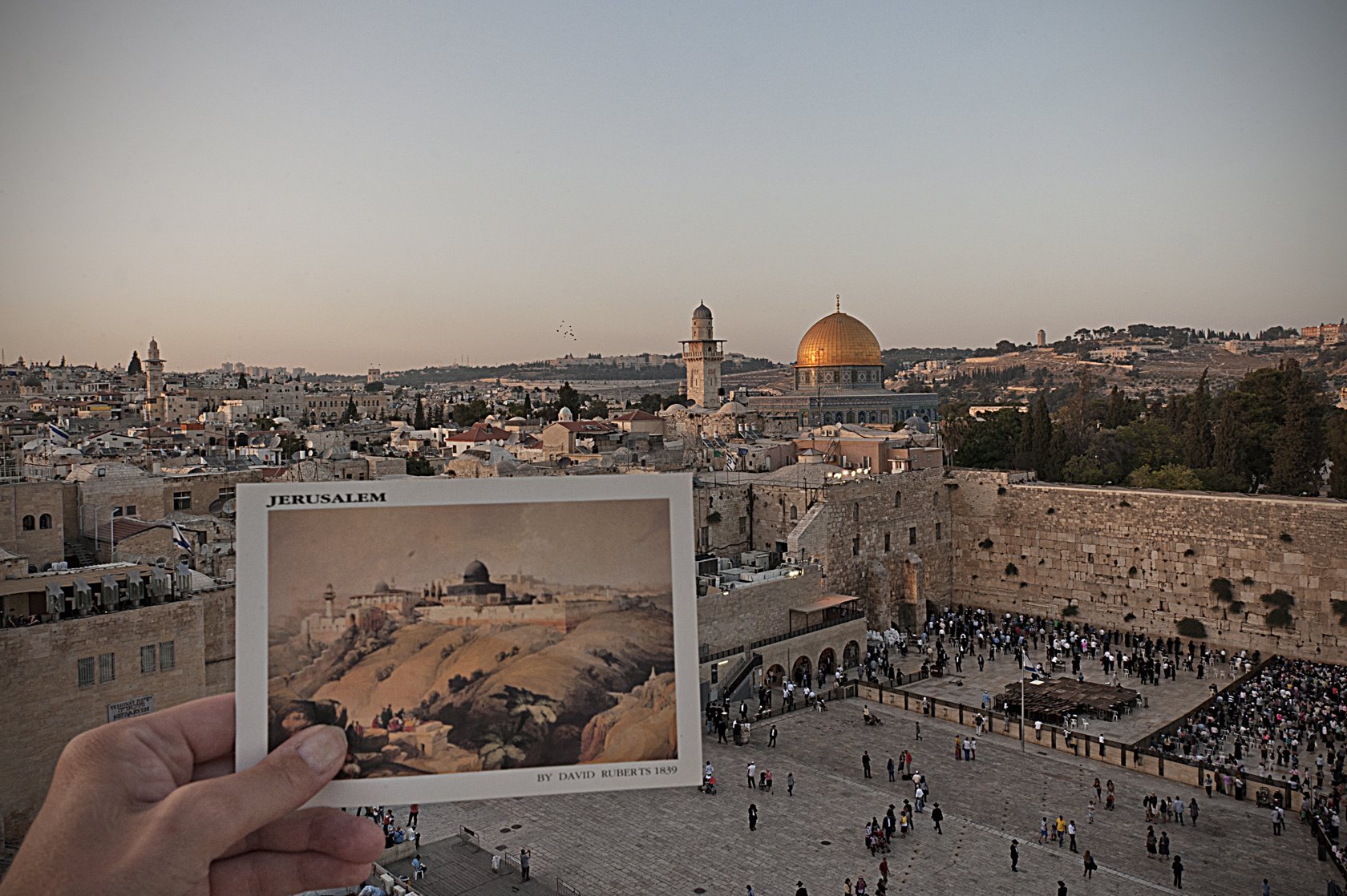
Naturally, I turned to The Wikipedia for answers, and wasn’t let down. As you will probably suspect, Wiki kept to the official narrative, which is to say, you are expected to drink the Kool-Aid. Temple Mount this. Temple Mount that. From day one, Fort Antonia was always the Temple Mount, and not the other way around. In an article titled Mount Zion, Wiki admits that Zion was the Jebusite city known as the City of David, but also claims that Zion moved locations. “Once the First Temple was erected at the top of the Eastern Hill, the name ‘Mount Zion’ migrated there too.” Wait, what? Sigh. I don’t need to poke holes in the official narrative. The Wikipedia will do it for me.
The first notable mile-marker arrives in 135, when the openly homosexual Emperor Hadrian erected a temple dedicated to Jupiter upon the Temple Mount. Just so there’s no confusion here, Jupiter’s Temple was built upon Fort Antonia, not Zion. As Josephus has already demonstrated, there was no other foundation for a temple to be laid. Only Fort Antonia remained—Kapeesh? In other news, the Bar Kokhba revolt was already underway. Wiki informs me that the Jerusalem church as a Jewish sect was henceforth cut off from history. I find that interesting. This is undoubtedly a reference to the Natsarim. Unlike the Christians of Antioch, the Jerusalem church was at complete odds against Pharisaical Judaism and Rome. Intel doesn’t like that. Perhaps we shall visit Kokhba’s rebellion at another time to see what was really going on, because the Jerusalem church reemerged afterwards with Greek names.
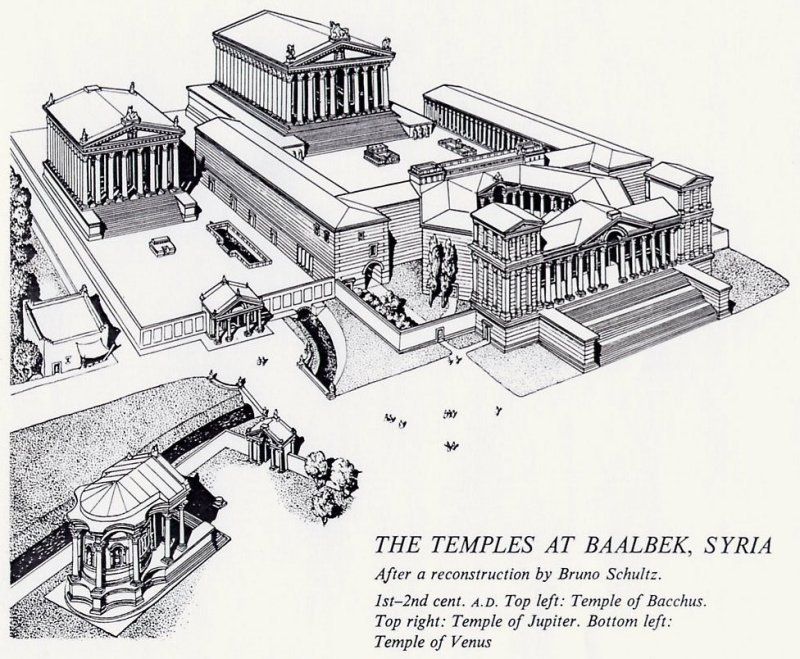
I then thought it might be a good idea to learn more about the temple which Hadrian built.
Hadrian’s temple featured a six-sided hexagonal building. I want you to remember that. He also built a statue of himself mounted upon a horse. Take a mental note of the horse. We actually have a very good idea of what his hexagonal-shaped temple looked like, because in Baalbek, Syria, Hadrian constructed a kissing cousin. A duplicate six-sided hexagonal building still survives. Be sure to jot that down in your memory as well.
We are furthermore told that Hadrian enlarged the Temple Mount. This is also worth remembering. If cognitive dissonance is already attempting to hold your brain hostage, then just know I do not negotiate with terrorists, as policy. Hadrian did not enlarge the Temple foundation which Josephus has already stated was completely destroyed.
Another fact I learned is that Hadrian neurotically went around finding every Christian and Jewish holy site he could, so as to build a pagan temple upon it. Jerome of Stridon died in Bethlehem around 420. In a letter to some guy named Paulinus, the theologian insisted that Hadrian had marked all the Christian “holy sites” with idols. Plant a red flag on that one. If the true Temple had been on Mount Zion and not Fort Antonia, then you will likely tell me that Hadrian built his temple dedicated to Jupiter upon Mount Zion, but you are wrong. Hadrian built his temple on Fort Antonia, precisely where the Dome of the Rock sits today. I hope you brought a lot of red flags, because you’re going to need them.
Though it is somewhat possible that the true location of Solomon and Herod’s temples were already being scrubbed in the collective consciousness and Hadrian was trying to convince everyone to look no further than Fort Antonia, I do not believe the swap happened quite yet. We should make another note of the fact that only sixty-five years have passed since the Temple’s destruction. Therefore, some who were still living would have seen it with their own eyes. And anyways, there’s a second century Roman historian I ran across. His name is Tacitus. Listen to how he describes the location of Yahuah’s house.
“The temple resembled a citadel, and had its own walls, which were more laboriously constructed than the others. Even the colonnades with which it was surrounded formed an admirable outwork. It contained an inexhaustible spring; there were subterranean excavations in the hill, and tanks and cisterns for holding rainwater. The founders of the state had foreseen that frequent wars would result from the singularity of its customs, and so had made every provision against the most protracted siege,”
The History of Tacitus
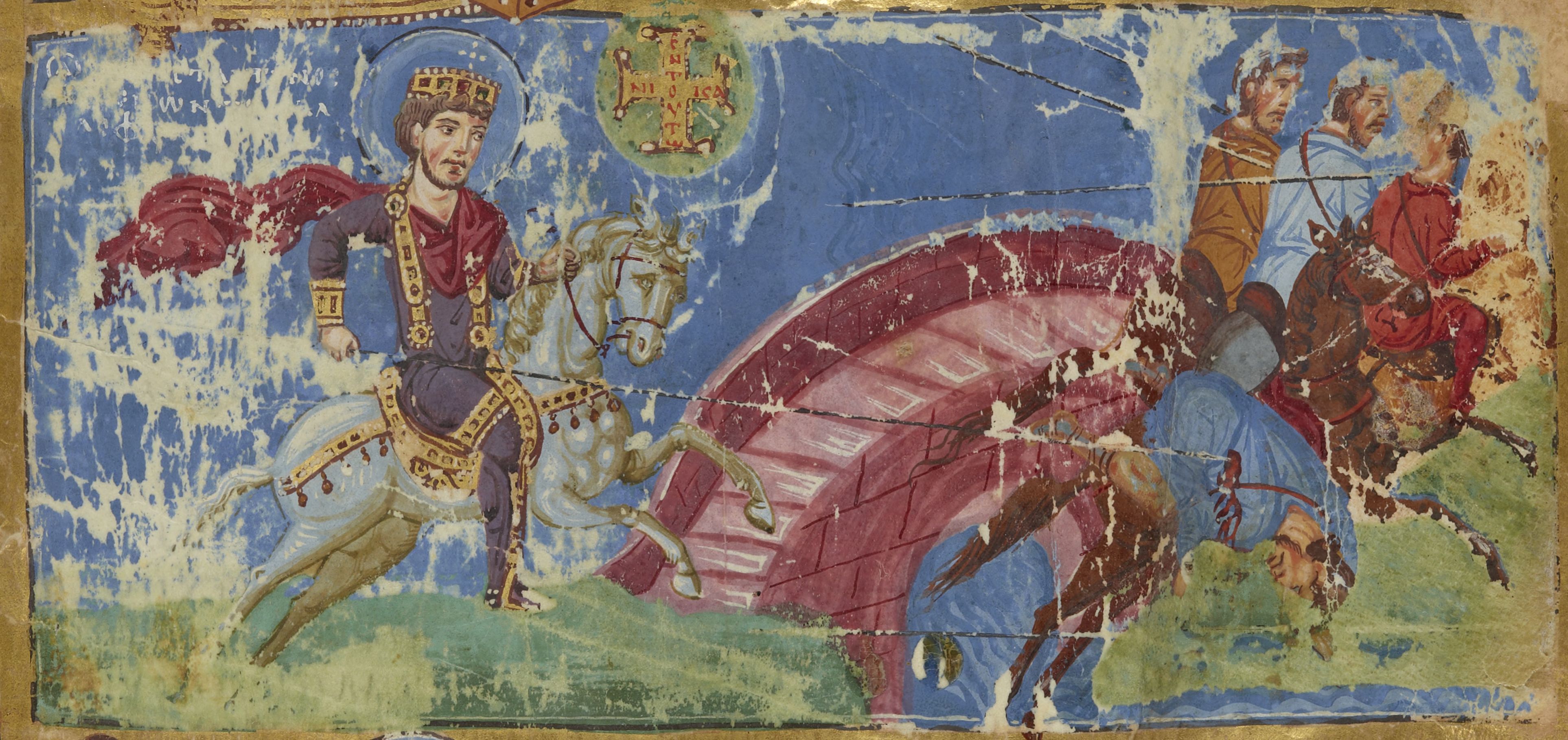
Did you catch that? The Temples of Solomon and Herod contained an inexhaustible natural water source. He’s referring to the Gihon spring. I’ve personally explored Hezekiah’s tunnel. Fresh running water still exists. The only natural spring anywhere within the radius of Jerusalem can be found alongside the Kidron Valley, below the City of David. The Temple Mount has no natural spring. Sure, it is perhaps true that the Romans built an aqueduct from Bethlehem, which was intended only for other Romans, and Fort Antonia had man-made cisterns, but that is not what Tacitus is here describing. This tells us that second-century Roman historians, as well as Jews, still knew where the temple once stood. And Hadrian is not building upon it.
The second notable mile-marker can be found some two-centuries later. Here we must pause, because I have already forgotten to mention that the Bar Kokhba revolt concluded in 136 with all of the Yehudim being expelled from the land. This is about when the disappearing trick transpired.
And it happened with Constantine.
See, Emperor Constantine was a Master Wizard. Much of history as we know it is a result of his sleight of hand. Consider the following. Scripture repeatedly informs us that Yahusha was crucified upon a tree, and yet Constantine institutionalized the cross of Tammuz as something to be revered. Tammuz was the sun god in the Babylonian Mysteries and father of Nimrod. More importantly, he switched Sabbath from the seventh day of the week to the first so that, once again, the sun god might be worshiped. Apollo. Sol Invictus.
Here’s another fun fact. At the Council of Nicaea in 325, Constantine made the pagan Trinity a foundational doctrine. His uncanny ability to wow the masses with something so simple as a coin pulled from the ear can be gleaned from the coin itself. Constantine printed Mithras on one side with Christian imagery on the other. For verification purposes, I was able to see one such coin in person while living with my family near Oxford. The Roman Emperor isn’t simply screwing with your head. He’s telling you exactly how the trick is performed. His own priests simply disrobed of one garment and slipped on another. Constantine was being “all things to all people.”
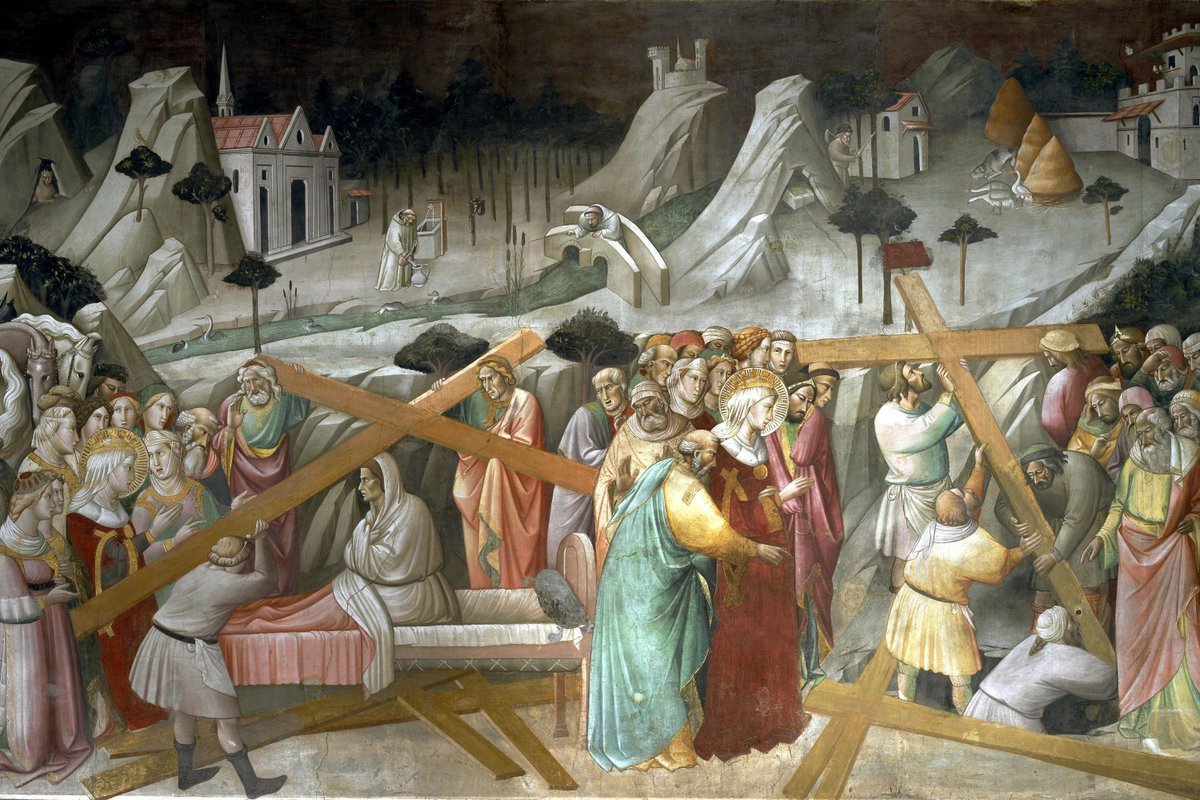
We are told that Helena, Constantine’s mother, converted to Christianity only after his own vision of the cross at the Battle of the Milvian Bridge in 312. He appointed her as Augusta Imperatix in 325—same year as Nicaea. This gave Helena unlimited access to the imperial treasury. Helena immediately undertook a trip to Palestine with the mission of discovering holy sites and then planting a big fat X upon them. It is strange indeed that Helena became an ambassador for the Christian religion, modeling its visual decor on par with her sons’ convictions, when in fact Constantine was a Mithraist until his dying day. Hence, the coin. His own propagandists once more inform us that he properly converted to Christianity on his deathbed. Right. His conversion, by the way, was the sort of baptismal rites which we might find in the Mystery religions. Go figure. If you’re paying attention, it means that the coin itself is a trick and the one side which is being shown to us is the illusion. So, let’s see what Constantine and Helena are up to in Palestine, because 325 is perhaps the year when Constantine performed his greatest Wizardry.
Eusebius, who served as both the Emperor and Helena’s propagandists, records that Constantine completely dismantled the temple to Jupiter, which Emperor Hadrian had built upon the Temple Mount only two centuries earlier. We shall return to that thought in a moment, because Constantine is also said to have destroyed a second temple built by Hadrian. Opinions differ on whether or not it was a temple devoted to Venus or Jupiter, but that is a side squabble. However, the three crosses which Helena discovered there are important. This much is recounted by Ambrose, the archbishop of Milan, who said Helena tested the three crosses on a dying woman. The first two did not heal her. The third did. Remember that Constantine had already preformed the swap from a tree to Tammuz, so one should easily begin to see the sleight of hand being performed. The Babylonian Mystery religions survive. One spirit is being traded in for another. The Emperor and his mother, and also Ambrose, want you to believe the openly-homosexual Emperor Hadrian was obstinately building temples devoted to pagan gods over sacred holy sites when in fact it was they who were flipping the coin. It was they who were building upon sites devoted to gods of the Mystery religion and calling them Christian. Hadrian had a temple built to Venus in Bethlehem and Helena transformed it into the Church of the Nativity. How very clever of her. Hadrian furnished his temple in Jerusalem with Tammuz crosses and Helena decided it would make for the perfect Church of the Holy Sepulcher.
Eusebius insists that Constantine dismantled both of Hadrian’s temples in Jerusalem. The Emperor even went so far as to dig up the ground where the Holy Sepulcher now resides “to a considerable depth, and the soil which had been polluted by the foul impurities of demon worship transported to a far distant place.” We are then told that the Temple Mount, or rather Fort Antonia, lay in ruins for some 350 years. Pay attention. Don’t blink. Has the disappearing trick already been performed on the stage?
You will tell me that Julian the Apostate wanted to rebuild the temple on the Temple Mount in 362, some thirty-five years after Constantine’s holy land pilgrimage. Julian makes no mention of the Temple Mount in his proclamation to rebuild the temple. Well, technically, no such proclamation survives. There is however an existing fragment from a letter dictated to a pagan priest, which reads: “I myself…intended to restore it [the Jerusalem temple], in honor of the god whose name has been associated with it.” Before we forget, Eusebius has already placed the Gihon Spring as the location of the temple. Then again, so has Constantine and Helena’s propagandists, Eusebius.
The historian writes:
“There is an inexhaustible reservoir of water, as would be expected from an abundant spring gushing up naturally from within; there being moreover wonderful and indescribable cisterns underground, of five furlongs, according to their showing, all around the foundation of the Temple, and countless pipes from them, so that the streams on every side met together. And all these have been fastened with lead at the bottom of the side-walls, and over these has been spread a great quantity of plaster, all having been carefully wrought.”
Eusebius’ recording of Aristeas (chapter 38)
We have now seen two Roman historians who place the foundation of the historical temple above natural springs of water. Nobody here is fingering Fort Antonia. Not yet, anyhow. And anyways, as you have already likely suspected, Julian’s decision to rebuild the temple did not go as some had hoped. Gregory of Nazianzus and Ephraem of Syria both reported that the Jews set about to work preparing the foundation, but were stopped short of terrifying balls of flame which kept bursting forth from the ground. Gregory described “a furious blast of wind” and “a flame that issued forth from the sacred place.” Ephraem likewise noted that there were winds, earthquakes and lightning, and something about a fire bursting forth. While the official narrative would have us leaving their report entirely up to suspicion, here is what I want you to pull away from this. Around 400AD, some three or four decades later, Jerome wrote that the statue of Hadrian mounted upon his horse was still standing over the holy of holies.
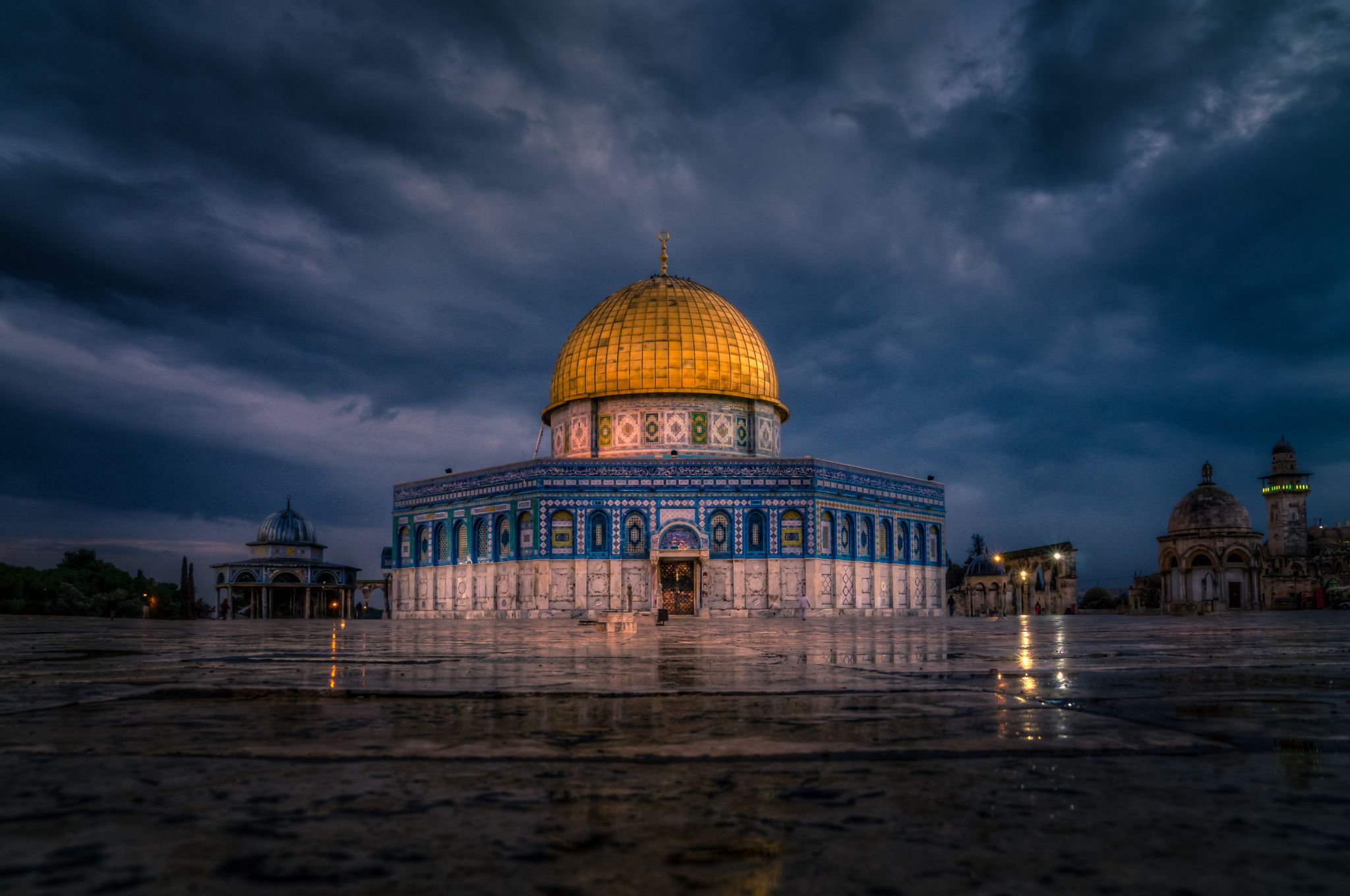
We should probably pause for a moment and consider the horse. The year is 400, and it still stands upon Fort Antonia. This tells us firstly that the Jews were not digging on the Temple Mount, or else the equestrian statue would have been removed. Especially if it were positioned as an antichrist idol over the Holy of Holies. Secondly, we are told that Constantine destroyed Hadrian’s Jupiter temple. And yet, everyone is leaving behind the stupid horse, despite the fact that it’s positioned over the reported Holy of Holies, which brings up the next point. With Jerome, Constantine’s propaganda has finally fermented. The notion that Hadrian was placing idols over sacred sites has been successfully packaged and sold. Despite three centuries, nobody has thought to remove the pig-sacrificing Emperor from the Holy of Holies until Jerome thinks to bring it up.
It is at this mile-marker in history that the horse and its rider disappear. Soon thereafter, Muhammad arrives. Riding a horse.
Muhammad of course was an agent of Rome. And Augustine was a spook. But that’s a story for another time. The Dome of the Rock was said to be built between 685 and 691, and here’s where the history of Fort Antonia gets especially odd. We are dealing with Qubbat al-Ṣakhrah and official history. Nothing else has ever been built like it architecturally in all the Islamic world. We should probably stop and consider why. Contrarily, there is an almost exact replica of the hexagonal-drum built in Baalbak, Lebanon. Wait, didn’t Hadrian build an identical temple to Jupiter in Baalbak, Lebanon? Indeed, he did. If you spotted Ba’al in the title, then you’ve read correctly. Not only are the two churches identical, but Dome of the Rock builders are said to have swapped the copper roof of Baalbak’s Dome for the Jerusalem Dome. How convenient.
Ask yourself, why would Muslims build an exact replica of the Ba’al temple which Constantine had torn down? There is not one reasonable explanation that I have ever found. Perhaps Constantine never tore it down to begin with and the Muslims merely had it refitted. Is it really that implausible of an explanation? It certainly wouldn’t be the last time. The Templars arrived and then gave it the name Temple of the Domini. From that moment on, as official history records, there was absolutely no question about it. The Templars had fortified themselves directly over the Holy of Holies. But that’s only because the Templars dealt in double meanings.
The far likelier scenario is that the Dome was built by Hadrian.
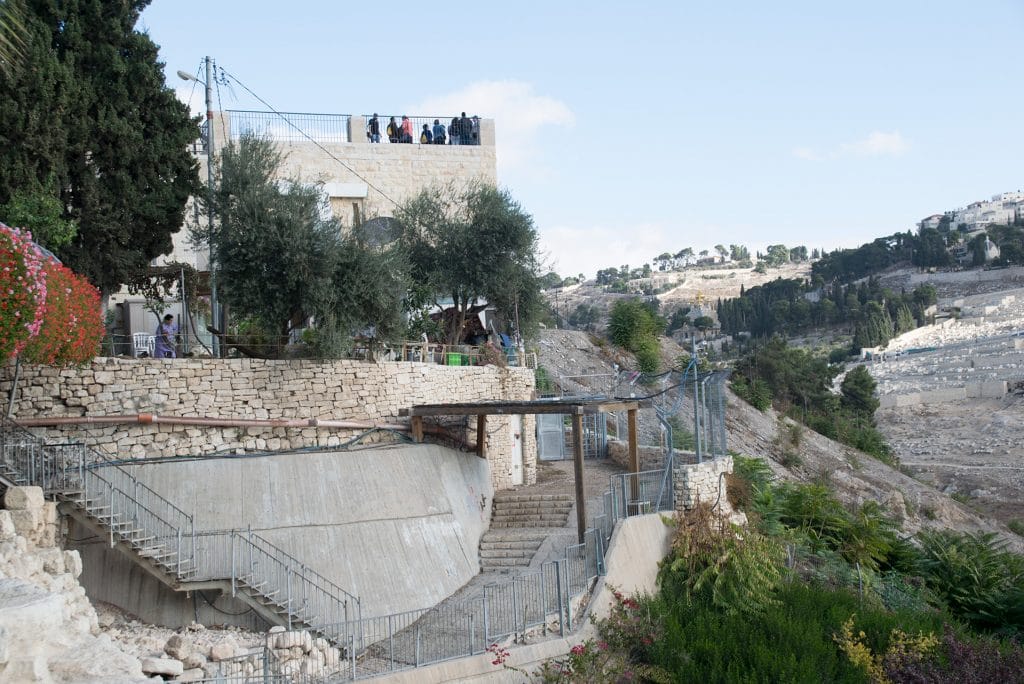
The Temple Mount Is the Nature of Deception
WHEREVER YOU go in Israel they tell you to look below your feet. Yahusha was born precisely where the statue to Venus stood, they tell you. Yahushua was crucified exactly where that other statue of Venus stood, they say. Meanwhile, the City of David has a look-out tower which appears to be placed on the very ground where the temple actually stood. Make a note of that. They tell you to stand there over natural cisterns of water, aka the Gihon Spring, and look out across the Millo towards Fort Antonia, where the statue of Jupiter once stood, and imagine Solomon’s Temple in all her glory. It’s a brilliant sleight of hand and the very nature of deception. They roll the truth right out in in plain/plane sight and then convince you that the complete opposite is true. It’s like a man wearing a dress who is free now to roam about the woman’s locker room, or in Marilyn Monroe’s case, become a lust worthy centerfold, because the science of xx and xy have absolutely no say in the argument. You stand upon the seashore and stare upon a flat horizon, something they even call sea level, and tell you it’s globular. Ridiculous. Despite your own observations, they will have you not only believing the opposite is true, you will mock anyone who dares to disagree with the lie.
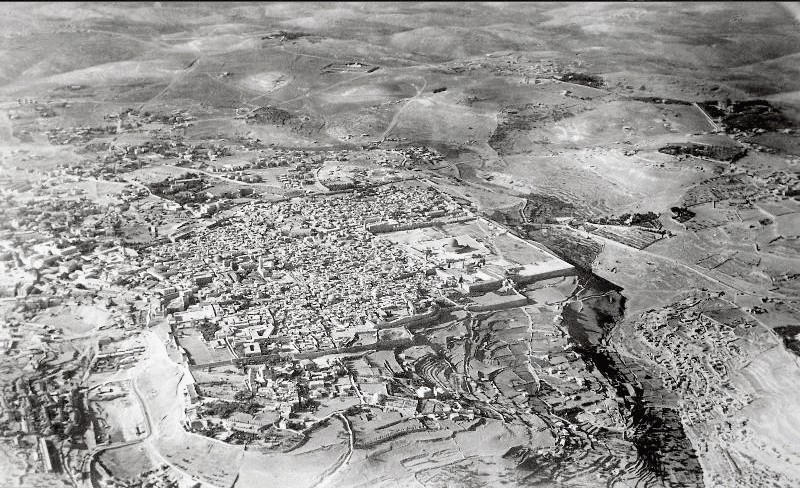
In 1910, aerial photography will show that the City of David was farmland. Dirt. That tells you everything you need to know right there. Blood was spilled over the Temple Mount. That’s because Ba’al needs his sacrifice. And yet, the City of David remained a field of dirt.
Believe me, they know.
The Muslims know. The Templars know. The Freemasons know. The Jesuits know. The Zionists know. The archeologists know. Even the Temple Institute knows. They all know. We’re not dealing with stupid. They can pick up Scripture and read the evidence for themselves. But cognitive concurrence is not the world we live in. Herod dressed spooks up as common Hebrews and sent them into the street. Today, the country of Israel and the Palestinian Authority does the same. There’s no shalom in the Middle East for one simple reason. They don’t with it to be so. Everything’s a show. The world is theater, and if you’ve been paying attention, the Temple Mount is center stage.
Noel

Sources:
.
Josephus, Antiquities of the Jews (Book XV, chapter XI)
Josephus, The War of the Jews (Book V, chapter VIII)
Eusebius, The Life of the Blessed Emperor Constantine (Book III, chapter XXVII)
Yahweh’s Restoration Ministry: “The Lost Temple Mount”
Wiki: “Temple Mount”
Wiki: “Aelia Capitolina“
